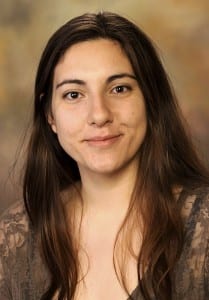Scientists see the world differently than most of us. In something as common and bothersome as a spider web for example, scientists discover important evolutionary clues.

The paper is entitled “Phylogenomics Resolves a Spider Backbone Phylogeny and Rejects a Prevailing Paradigm for Orb Web Evolution.”
Garrison was co-first author on the paper along with Dr. Jason E. Bond, her student advisor at Auburn University, Ala., where she’s now completing her doctoral degree. Bond also is the director of the Auburn University Museum of Natural History.
“It’s about the evolution of spider webs. We used phylogenomic data that looks at the evolutionary history of spiders. I helped to analyze the next generation sequence data. We were looking at when the orb web evolved and trying to understand how very diverse spider families are related to each other,” Garrison explained recently during a phone interview. “It seems that the orb web happened once, in the Jurassic period. Our study refutes the competing hypothesis that all spiders that weave orb-shaped webs are closely related.”
“We’re very proud of Nicole. To have her work mentioned favorably in Nature is a big deal and we applaud her efforts,” said Dr. Zach Loughman, WLU assistant professor of biology.
A native of Moundsville, W.Va., Garrison graduated from WLU in 2009 with a Bachelor of Science degree, majoring in both general biology and environmental chemistry. Currently she is completing her doctoral degree in biology, with anticipated graduation in 2016. The spider web study is part of her work for her dissertation.
Garrison isn’t sure about her professional future yet but is likely to work in the field of ecological research.
Currently the study reviewed in Nature can be read online at Current Biology (cell.com). It also will be published in the print edition of Current Biology soon.